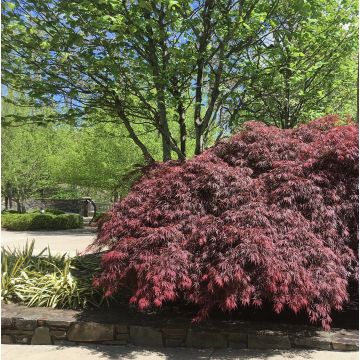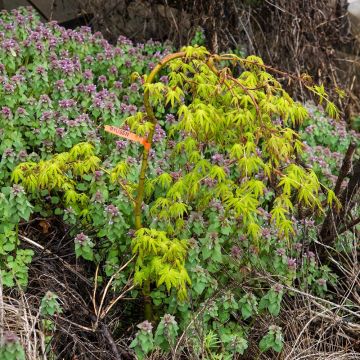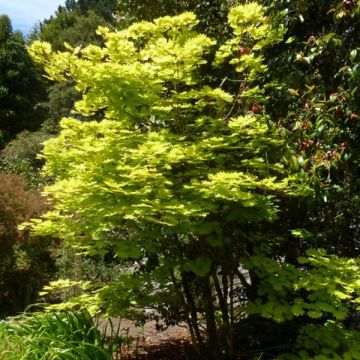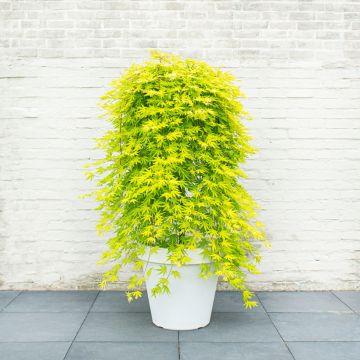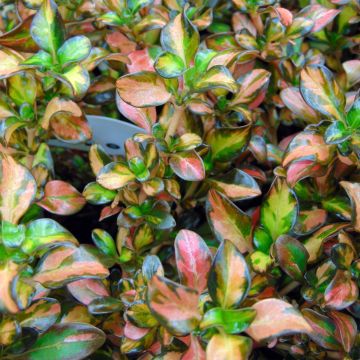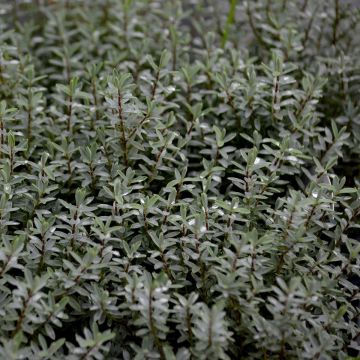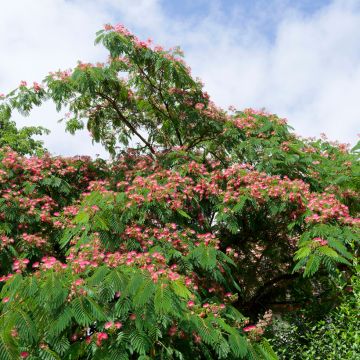

Acer palmatum Summer Gold - Japanese Maple


Acer palmatum Summer Gold - Japanese Maple


Acer palmatum Summer Gold - Japanese Maple
Acer palmatum Summer Gold - Japanese Maple
Acer palmatum Summer Gold
Japanese Maple, Palmate Maple
Hello, My beautiful 7-year-old Acer Palmatum "Summer Gold" has been hit by frost in early spring (2022) on its entire budding half. The rest is leafy, so no problem. My question: should I prune the dead budding branches (their wood is currently very pale green and brittle)? And if so, should I prune them now in this spring or this winter? Thank you very much for your response. Kind regards, Brigitte.
Brigitte, 30/04/2022
This item cannot be shipped to the selected country
Delivery charge from €5.90
Delivery to Corse prohibited
More information
Schedule delivery date,
and select date in basket
This plant carries a 24 months recovery warranty
More information
We guarantee the quality of our plants for a full growing cycle, and will replace at our expense any plant that fails to recover under normal climatic and planting conditions.
From €5.90 for pickup delivery and €6.90 for home delivery
Express home delivery from €8.90.
Delivery to Corse prohibited: UE law prohibits the import of this plant from mainland France to Corse as part of the fight against Xylella fastidiosa. Please accept our sincere apologies.
More information
Does this plant fit my garden?
Set up your Plantfit profile →
Description
Acer palmatum 'Summer Gold' is a Japanese maple that catches the eye from spring, with its young yellow foliage mixed with bright orange young shoots. Summer paints this small bushy tree with a vibrant fresh green, while autumn transforms it into an orange bush. Of medium size, with a generally upright but flexible habit, it is perfectly suited to small spaces and performs very well in pots. Japanese maples, although they prefer limestone-poor soils, are actually quite tolerant. Any lightened soil, enriched with compost and well-drained, remaining moist in summer, is likely to suit them.
Originally from eastern China, Korea, and Japan, Acer palmatum is the origin of a multitude of horticultural varieties that compete in beauty. Japanese maple belongs, like all maples, to the Sapindaceae family (formerly Aceraceae). It is relatively hardy but cannot tolerate cold and dry winds.
The slow-growing 'Summer Gold' cultivar grows an average of 10cm (4in) per year. It develops over time into a bushy habit, supported by well-branched, upright main branches. It reaches an average height of 3m (10ft) with a spread of 2.5m (8ft) when planted in the ground. When grown in a pot, it will not exceed 2m (7ft) in height. This small tree has a brown to reddish-brown bark on young branches and develops beautiful deciduous leaves, with palm-shaped and finely cut lobes. In this 'Summer Gold' variety, the foliage keeps changing colour, going from bright orange during bud break to yellow, then green, and finally orange. The leaves are opposite, divided into 7 fairly wide lobes, with toothed edges and pointed tips. The discreet red flowers bloom in May-June. The flowers, grouped in small clusters, sometimes produce winged fruits called samaras, which are 3cm (1in) long. The samaras turn from green to red in summer, then brown when ripe.
Acer palmatum 'Summer Gold' is a compact yet bright and sculptural tree. It is perfect for small gardens in a Japanese, contemporary, or exotic style, for ornamenting terraces and patios, as well as shaded rockeries. Azaleas, pieris, rhododendrons, wild camellias, and heathers will be its most beautiful companions, as well as heucheras with pink or purple foliage. It can form a magnificent bonsai to be cultivated in a flat tray. Combine several varieties of Japanese maples to vary the colours and structures of the foliage; the effect is always stunning at the end of the season. A carpet of creeping bugles, cerastiums, or even Asarum splendens or lungworts will enhance its beauty.
Report an error about the product description
Acer palmatum Summer Gold - Japanese Maple in pictures
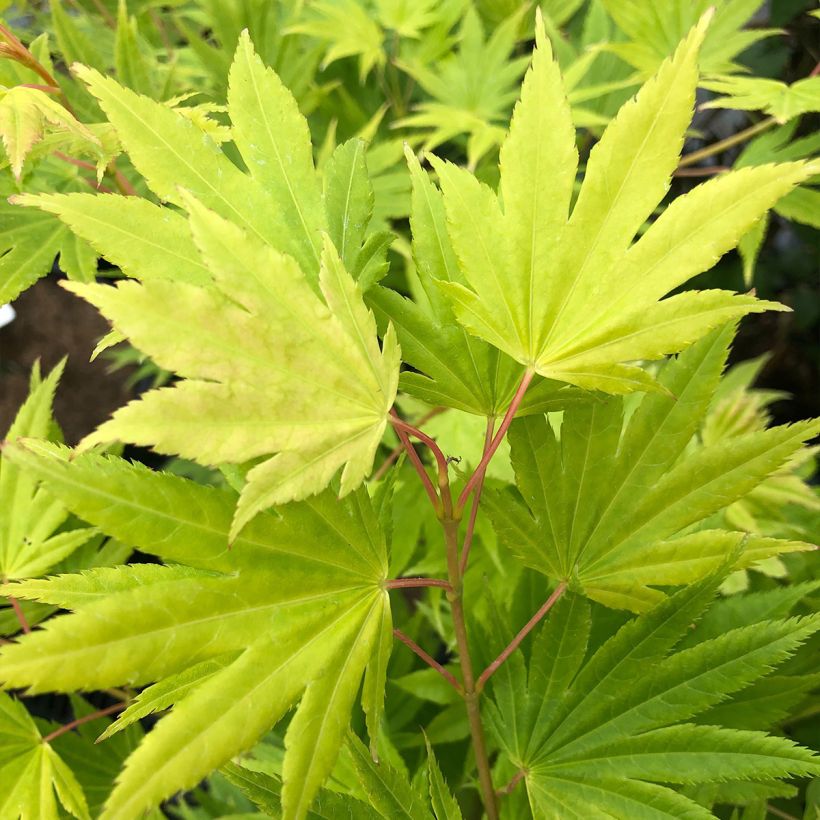

Plant habit
Flowering
Foliage
Botanical data
Acer
palmatum
Summer Gold
Aceraceae
Japanese Maple, Palmate Maple
Cultivar or hybrid
Other Japanese Maples
Planting and care
Plant in spring or autumn in preferably light, neutral to acidic, moist, deep, loose, and well-drained soil, in a sunny (but not scorching) or partially shaded position, even in shade, and sheltered from cold and dry winds. The soil should be kept moist by mulching in summer, if necessary, but should not be waterlogged in winter. Add a significant amount of organic matter every 3 years to ensure a good humus content in the soil. Mulch, water, and mist the foliage on hot evenings. Winter pruning is limited to balancing the branches. Treat preventively against scale insects and Verticillium, a fungal disease that occurs in heavy and overly moist soil.
Planting period
Intended location
Care
-
, onOrder confirmed
Reply from on Promesse de fleurs
Striking foliage shrubs
Haven't found what you were looking for?
Hardiness is the lowest winter temperature a plant can endure without suffering serious damage or even dying. However, hardiness is affected by location (a sheltered area, such as a patio), protection (winter cover) and soil type (hardiness is improved by well-drained soil).

Photo Sharing Terms & Conditions
In order to encourage gardeners to interact and share their experiences, Promesse de fleurs offers various media enabling content to be uploaded onto its Site - in particular via the ‘Photo sharing’ module.
The User agrees to refrain from:
- Posting any content that is illegal, prejudicial, insulting, racist, inciteful to hatred, revisionist, contrary to public decency, that infringes on privacy or on the privacy rights of third parties, in particular the publicity rights of persons and goods, intellectual property rights, or the right to privacy.
- Submitting content on behalf of a third party;
- Impersonate the identity of a third party and/or publish any personal information about a third party;
In general, the User undertakes to refrain from any unethical behaviour.
All Content (in particular text, comments, files, images, photos, videos, creative works, etc.), which may be subject to property or intellectual property rights, image or other private rights, shall remain the property of the User, subject to the limited rights granted by the terms of the licence granted by Promesse de fleurs as stated below. Users are at liberty to publish or not to publish such Content on the Site, notably via the ‘Photo Sharing’ facility, and accept that this Content shall be made public and freely accessible, notably on the Internet.
Users further acknowledge, undertake to have ,and guarantee that they hold all necessary rights and permissions to publish such material on the Site, in particular with regard to the legislation in force pertaining to any privacy, property, intellectual property, image, or contractual rights, or rights of any other nature. By publishing such Content on the Site, Users acknowledge accepting full liability as publishers of the Content within the meaning of the law, and grant Promesse de fleurs, free of charge, an inclusive, worldwide licence for the said Content for the entire duration of its publication, including all reproduction, representation, up/downloading, displaying, performing, transmission, and storage rights.
Users also grant permission for their name to be linked to the Content and accept that this link may not always be made available.
By engaging in posting material, Users consent to their Content becoming automatically accessible on the Internet, in particular on other sites and/or blogs and/or web pages of the Promesse de fleurs site, including in particular social pages and the Promesse de fleurs catalogue.
Users may secure the removal of entrusted content free of charge by issuing a simple request via our contact form.
The flowering period indicated on our website applies to countries and regions located in USDA zone 8 (France, the United Kingdom, Ireland, the Netherlands, etc.)
It will vary according to where you live:
- In zones 9 to 10 (Italy, Spain, Greece, etc.), flowering will occur about 2 to 4 weeks earlier.
- In zones 6 to 7 (Germany, Poland, Slovenia, and lower mountainous regions), flowering will be delayed by 2 to 3 weeks.
- In zone 5 (Central Europe, Scandinavia), blooming will be delayed by 3 to 5 weeks.
In temperate climates, pruning of spring-flowering shrubs (forsythia, spireas, etc.) should be done just after flowering.
Pruning of summer-flowering shrubs (Indian Lilac, Perovskia, etc.) can be done in winter or spring.
In cold regions as well as with frost-sensitive plants, avoid pruning too early when severe frosts may still occur.
The planting period indicated on our website applies to countries and regions located in USDA zone 8 (France, United Kingdom, Ireland, Netherlands).
It will vary according to where you live:
- In Mediterranean zones (Marseille, Madrid, Milan, etc.), autumn and winter are the best planting periods.
- In continental zones (Strasbourg, Munich, Vienna, etc.), delay planting by 2 to 3 weeks in spring and bring it forward by 2 to 4 weeks in autumn.
- In mountainous regions (the Alps, Pyrenees, Carpathians, etc.), it is best to plant in late spring (May-June) or late summer (August-September).
The harvesting period indicated on our website applies to countries and regions in USDA zone 8 (France, England, Ireland, the Netherlands).
In colder areas (Scandinavia, Poland, Austria...) fruit and vegetable harvests are likely to be delayed by 3-4 weeks.
In warmer areas (Italy, Spain, Greece, etc.), harvesting will probably take place earlier, depending on weather conditions.
The sowing periods indicated on our website apply to countries and regions within USDA Zone 8 (France, UK, Ireland, Netherlands).
In colder areas (Scandinavia, Poland, Austria...), delay any outdoor sowing by 3-4 weeks, or sow under glass.
In warmer climes (Italy, Spain, Greece, etc.), bring outdoor sowing forward by a few weeks.


































